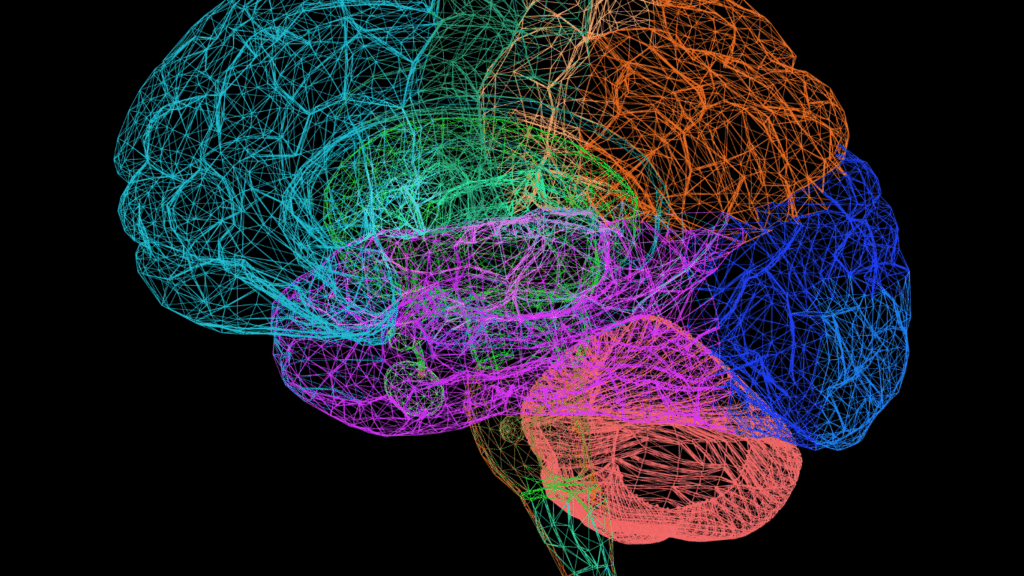Table of Contents
Introduction
Have you ever been overcome with emotion for no apparent reason?
Almost certainly: we’ve all had times when we’ve thought or worried about something negative. These feelings are not only unpleasant, but they can also cause mental paralysis.
A lot of people spend a lot of time reacting to negative thoughts that keep popping up in their heads. You are not your brain book summary.
Some people are paralyzed by fear when they have to give a speech in front of a crowd. Others don’t talk to other people because their thoughts tell them they don’t deserve love and acceptance.
This book synopsis is for you if you find yourself relating to the situations described. They prove that negative mental processes are not actually part of “you,” but rather, are the brain’s way of sending mixed signals. You don’t have to pay attention to them since you are not your brain.
Keep reading to learn how to stop listening to your thoughts and start acting like your genuine self.
This article provides a synopsis of “You Are Not Your Brain,” written by Jeffrey M. Schwartz and Rebecca Gladding.
- A guide to mental dominance in four easy steps
- The neurobiology of unhappiness.
- How to prevent your thoughts from carrying you away when they wander.

Do you know how your brain works?
Chapter 1: You Are Not Defined By Your Brain
It is the nature of the human intellect to ramble. However, at times they seem to wander off into the woods, leading us in directions we would rather not go.
When this occurs, we may feel helpless to regain control of our thoughts, so we may rather allow ourselves to go off the deep end in an attempt to retrieve them. All the while allowing our disposition to plummet, our confidence to waver, and our sanity to be threatened by nagging doubts. Everyone experiences this at some point.
But if we could put a stop to it, wouldn’t that be fantastic? Schwartz argues that we can and should interrupt anxious, unhelpful thought cycles before they have a chance to become overwhelming. He uses a case study on a patient he treated to demonstrate his point.
The young man was a successful Broadway performer who was basically living his dream, but he was trapped in the grasp of his brain’s negative self-talk and had absorbed the message that he was useless, talentless, and unworthy of any great luck.
You can probably guess that this led to a number of issues in his career, including severe cases of performance anxiety and an almost paralyzing fear of rejection that kept him from stepping out for new jobs. Thanks to Schwartz’s guidance, he was able to recognize that he had been traumatized by an earlier event in which he had frozen during an audition for a well-known Broadway producer. Not surprisingly, he bombed the audition due to his inability to do anything other than sit there and listen.
As a result, he shut out the positive realities of who he was and what he was capable of. His brain was poisoning him, so he followed its lead and decided that his shortcomings were vital to who he was. Many of us are guilty of this, and as you know from your own experience, it can have grave consequences. It’s important to remember that, like this young kid, we are not our negative thoughts and that we have the ability to recover our brains from their hold.
Chapter 2: We’re Just Wired That Way
The “programming” in our neurons is mostly responsible for our emotional pain. Because of this, we frequently partake in harmful behaviors despite our awareness of their negative effects, and we often feel helpless in the face of the temptation to indulge in our guilty pleasures.
This happens because our unhealthy habits (such as binge drinking, smoking, and overeating) are geared toward providing us with momentary relief from our emotional pain. In addition, our brains are very programmable, so when we partake in these actions and feel better for them, our brains learn to link them with positive emotions.
One of the authors’ other sufferers was a great businessman who was feeling a lot of pressure since everyone in his life wanted his opinion on their problems. He grew tired of feeling responsible for everyone else’s issues and started relaxing with a glass or two of wine every night. Regrettably, this made him want alcohol whenever he felt stressed, and eventually whenever he felt stressed or not.
The same thing can happen to anyone, regardless of the damaging behaviors they engage in, when they try to rid themselves of unpleasant thoughts by engaging in so-called “stress routines.” This leads us to become dependent on these short-term fixes rather than working toward long-term sobriety, and this in turn perpetuates the addictive behavior. Those negative emotions just become stronger with each repetition of the bad habits.
Chapter 3: You Can Retrain Your Brain
If our negative thought patterns are the result of faulty brain wiring, then it stands to reason that we are essentially helpless to change our situation. Contrary to popular belief, however, the opposite is true. Because of a phenomenon called self-directed neuroplasticity, there is actually a lot of reason for optimism when it comes to the cultivation of healthy cognitive patterns.
Neuroplasticity, or the brain’s capacity to learn new skills, is what makes it possible for humans to retrain their brains in this way. The best thing is that you can shape your brain’s neuroplasticity to serve your own best interests. In that case, how do you take the wheel?
You might begin by thinking about what you truly care about and what makes you happy. Though it may sound as light and easy as being instructed to “think happy thoughts,” there’s actually quite a bit more to it than that. By refocusing your mind on something positive, you may see the lies your brain has been telling you in its deceitful messages about what you should be thinking about.
So if you train yourself to think, “I am a valid individual with friendships and capabilities, and people love my company because I am kind, humorous, and sympathetic,” you will eventually realize the absurdity of your negative self-talk. So this, in turn, will assist you in ignoring it and remembering that it doesn’t represent you in any meaningful way.

You are not your brain
Chapter 4: The Four Step Method
If you’re willing to take control of your neuroplasticity and start retraining your brain, here’s a straightforward approach you can utilize: The four R’s (relabeling, reframing, refocusing, and revaluing) are at the heart of these four processes, which will help you break the links between destructive beliefs and behaviors.
Nonetheless, you will find that this strategy never suggests you try to prevent your dark thoughts from occurring. Because it’s nearly impossible to stop thoughts from coming into your head, and you’d waste a lot of effort if you tried, this approach encourages you to instead focus on doing something useful once you become aware of them.
Rather, you may use some very neat techniques, including Hebb’s Law and the quantum Zeno effect, to train your brain to concentrate on things that are essential to you. You may have never heard of these concepts before, yet they help explain why we form both good and bad habits in the first place. Hebb’s Law, for instance, states that any time you perform a certain action again, a new circuit is generated in your brain.
This can occur, for example, if you create a habit of taking deep breaths whenever you feel stressed, or if you drink a lot of alcohol to relieve your anxiety. When you concentrate on something to the exclusion of all else, you are able to refocus the energy of your brain’s activated regions in a different direction, a process known as the quantum zeno effect. Let’s jump in and find out how we might reorganize our neural pathways by engaging in the four R’s.
Chapter 5: Relabel
The use of labels can have profound effects. If you’ve ever been called a derogatory name in school, you know from experience that how we label something greatly affects how we see it. It’s the same with trying to combat the misleading information our brains send us—the first step is to recognize it for what it is and give it a new name.
For the sake of argument, let’s pretend you’ve been living with these disturbing ideas popping into your head for no apparent reason and you’ve been accepting them at face value.
Say your brain tells you, “You’re not talented,” and you react, “Yep, you’re right, I’m not,” incorporating that belief into who you see yourself to be. Rebranding is a frontline assault on that process, allowing you to flip it around before it can become ingrained in who you are.
So, let me explain how it goes down. Instead of mindlessly letting your thoughts drift aimlessly, relabeling encourages you to train your awareness by making mental notes and identifying what they are. The thought, “I’m not talented,” will be met with the response, “That’s a lie” or “That’s a fear,” thereby halting the negative thought process. Mindfulness can help you do this.
Mindfulness, like meditation, involves training your attention and focus to keep you in charge of your thoughts. It’s a procedure that relies on past practice, so you’ll need to give it a few regular goes before you see any progress.
Finding a quiet, peaceful spot for yourself is a terrific way to practice mindfulness. First, focus your attention on the physical act of taking a full breath in and out, and then observe the ideas that arise in response. Simply accept the ideas as they come, rather than criticizing them or getting upset about their presence, and then bring your attention back to your breathing.
Consistent practice will improve your awareness of mental processes and help you identify them as they occur. After you’ve mastered this procedure, you may move on to the next one, which entails recognizing the specific nature of your destructive ideas and putting a halt to them. When you master this technique, you’ll have the power to dismiss negative ideas from your consciousness.
Chapter 6: Reframe
Although helpful, renaming your negative ideas won’t put an end to them on their own. Changing how you think about these ideas is the next critical step. This is necessary because when negative thoughts first appear, it can seem as if they are of paramount importance and even have the right to dictate how we spend our time.
Possible causes include their roots in anxiety and the fear that comes with letting go of worry about a potential source of stress. Although it’s futile to worry about something whose end remains the same regardless of our thoughts, we often find that worrying about it makes us go insane. which is why a reframe is necessary.
One of the patients with whom the writers assisted illustrates the advantages of a new perspective. It was common for him to have disturbing, unwelcome thoughts, such as the fear that something horrible would strike someone close to him if he didn’t bother to check something at a specific moment.
Even though he knew there was no rationale for his fears, he still battled them and found himself checking everything repeatedly as the only way to distract himself from his anxiety. This habit was quite powerful, and the only way he was able to break it was by redefining the intrusive ideas as “fake foreign invaders.”
That made the thoughts sound strange and poisonous, and nobody would give over control of their mind to an alien. The confidence gained from this realization allowed him to move on to the next stage, which was to reframe the thoughts by saying things like, “That’s not me, it’s just my brain.” This demonstrated that he was simply projecting his own negativity onto the situation.
They were not a part of who he was or what made him who he was because they were merely false hallucinations his brain conjured up. And when we are able to accomplish this, we are able to build walls between the harmful ideas and who we are, preventing them from harming us.

How to reframe your brain?
Chapter 7: Refocus
Having our attention refocused is the next crucial step in retraining it. If you’re anything like me, you have a hard time resisting the allure of pursuing your own toxic thoughts at the expense of paying attention to the things that are really important. This is in part due to the fact that I do not actively consider it in this way.
A more concerted effort to refocus my attention would be made if I told myself, “I’m opting to avoid focusing on my tasks and concentrate on this item that troubles me.” However, we need to refocus because our minds often get in the way of us recognizing it. Even with helpful strategies like renaming and reframing, we may still find it difficult to stop ourselves from spiraling into negative thoughts.
Refocusing asks us to think of some positive actions we may take to help with this process.
Because it’s so difficult to think of new ideas when we’re in the midst of a negative thinking spiral, the article recommends keeping a running list.
One option is to take a “mindful walk,” during which one focuses on one’s breathing and one’s steps while also paying attention to one’s surroundings; another is to keep a “mindfulness journal,” in which one records one’s thoughts as they occur; yet another is to channel one’s nervous energy into physical activity or to contact a reliable friend for moral support.
To avoid becoming trapped in a single coping method or realizing that repeatedly engaging in the same activity isn’t effective in redirecting your concentration, it may be beneficial to have a number of options available.
And as you strive to refocus, keep in mind that the goal here isn’t to stop the unpleasant ideas from coming up or even to divert your attention from them. Instead, it’s about taking charge of your own mental processes and reactions.
Given that you will act on these ideas regardless of whether they are helpful or harmful, the question is how. So instead of trying to suppress negative ideas, let them in and redirect your attention into constructive pursuits that will eventually drive them away.
Chapter 8: Revalue
The last and arguably most crucial stage is to restore your sense of self-worth. Because the brain’s false messages severely damage your sense of self-worth, even if you don’t recognize it at the time, In addition, prolonged exposure to these negative ideas gives them the ability to radically warp your sense of self-worth.
The process of revaluing yourself motivates you to break the cycle and instead develop positive, self-loving ideas about yourself. As simplistic as it may sound, revaluing is just making the conscious decision to adopt a more optimistic and sympathetic outlook on one’s life.
That, however, does not happen immediately. Only by mastering mindfulness and learning to rename, reframe, and refocus negative thoughts can you give yourself the freedom to change your perspective and think more constructively.
By prioritizing self-care, you can avoid giving in to destructive thoughts and instead make decisions from a safe, healthy position, one in which you can ask yourself directly whether those choices are ones that are good to you.
A good place to begin is to imagine that you are a loved one of yours and ask yourself if you would approve of the decisions, you make and the way you talk to yourself if it were them instead of you. If you discover that you could be more compassionate to another person, you may need to do some additional revaluing.
Chapter 9: Conclusion
Destructive, overthinking are something we all have to deal with, and it’s easy to let them take over. In contrast, we can create a life separate from these thoughts when we acknowledge that we’re not our brains and recognize that they are merely deceptive messages from within. With the help of the Four Step Approach, we can reclaim our lives and rewire our brains for a brighter, healthier tomorrow.

Conclusion
Synopsis
This book’s key message:
The erroneous, damaging information your brain sends activates detrimental behaviors and routines in you. However, you have the power to alter this neural circuitry. You can sever the links between negative ideas and actions by applying the Four Steps of renaming, reframing, redirecting, and revaluing.
Practical suggestions:
If you find yourself putting off a task, try using the Four Steps instead.
(1) Change the name to reflect the actual situation: Examples: “I really want to check Facebook right now.”
(2) Reframe by thinking about what’s really bothering you: “Checking Facebook calms my worry that I won’t be able to do the things I need to do.”
(3) Get back on track by doing something useful, such as starting the simplest chore at hand.
(4) Revalue by realizing that this urge to put things off is just a false message from your brain that you should ignore.
Create a log of your fitness routine.
Why not keep a small book of healthy, useful, or enjoyable refocusing activities to help you get through the Four Steps more efficiently? As a result, you won’t have to worry about running out of things to do in the event that a misleading thought process arises in your mind.
Read more book summaries: https://psytify.com/book-summaries/
Buy this book @ Amazon: https://www.amazon.com/You-Are-Not-Your-Brain/dp/1583334831

